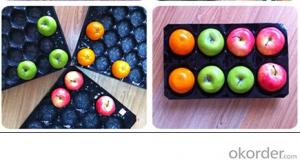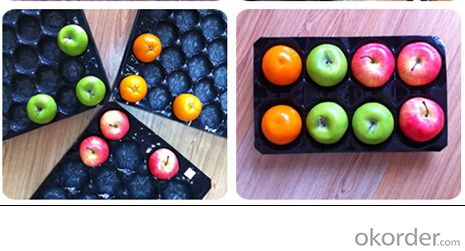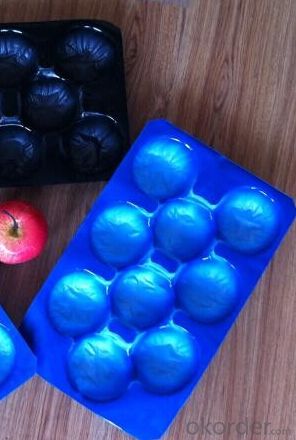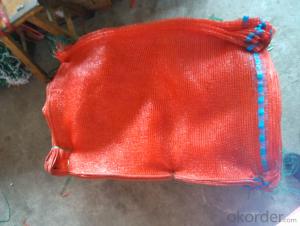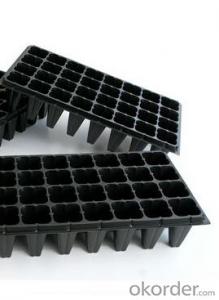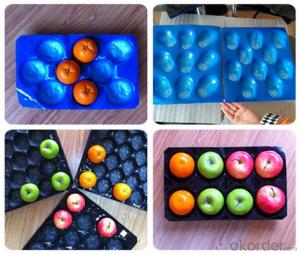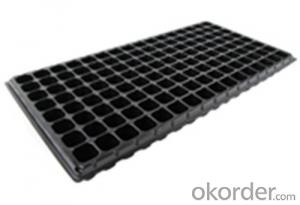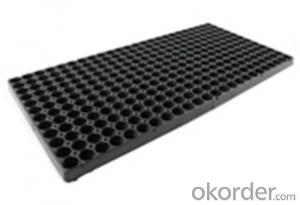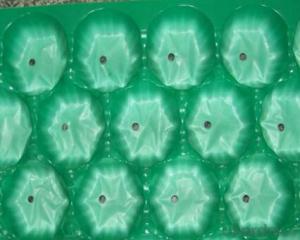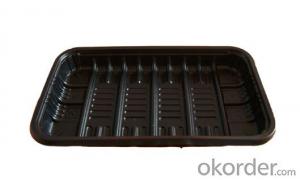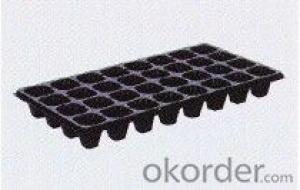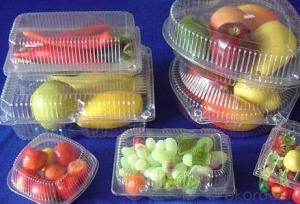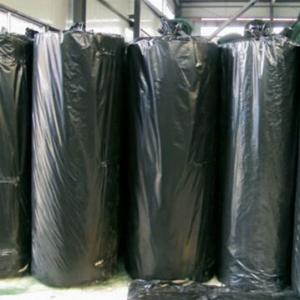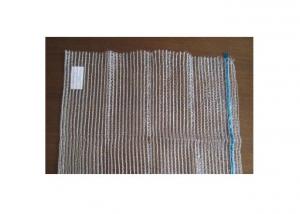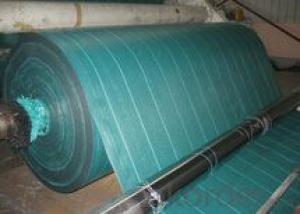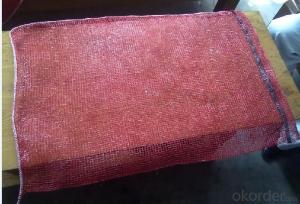Environmental plastic fruit packing tray for fruit
- Loading Port:
- Qingdao
- Payment Terms:
- TT OR LC
- Min Order Qty:
- 100000 pc
- Supply Capability:
- 100000000 pc/month
OKorder Service Pledge
OKorder Financial Service
You Might Also Like
Fruit PP tray Features
1. Protection of your fruit from damage during transit,retail and display and preserve the quality of your fruit.
2. Maximum comfort during transport for fruit or vegetables.
3. Multiple perforations for maximum ventilation, Keep fruit orvegetables fresh.
4. Adaptable to all types of outer packaging
5. Can achieve good packing effect
6. To protect the fruit efficiently during its long journey to the international markets.
HOW TO CUSTOM
1. Please send your detailed requirements to me, Such as size, material, color, weigh, quatity or design.
2. I will make design for you according your requirements if you do not have design.
3. Once the design was confirm, The offer will send to you soon.
4. After price was confirmed, I will make Proforma invoice to you and ready to make
samples for you check.
5. After samples was confirmed, We will arrange the order production upon receipt of confirmed PI and your deposit.
6. After the goods is ready to ship, We will informs you the shipping date and other
detailed information.
7. We will help to track the goods until you receive it
- Q: We have to much plastic and not enough energy - is it possible to turn plastic INTO energy?
- Not that I know of. Plastic and Energy are two elements. It could be possible, but I am not sure.
- Q: What are some ground cover options for areas with poor drainage?
- Some ground cover options for areas with poor drainage include creeping thyme, creeping juniper, sweet woodruff, and moss. These plants are known for their ability to tolerate wet conditions and help improve soil drainage.
- Q: Are nursery trays suitable for bonsai pots?
- No, nursery trays are not suitable for bonsai pots. Bonsai pots have specific characteristics that are essential for the health and growth of bonsai trees, such as proper drainage, size, depth, and aesthetics. Nursery trays typically lack these features and are designed for temporary plant storage or propagation purposes. It is important to use appropriate bonsai pots to ensure the success and long-term health of bonsai trees.
- Q: How are plastic pallets used in agriculture?
- Plastic pallets are used in agriculture for various purposes such as transporting and storing agricultural products, facilitating efficient material handling, and organizing goods within warehouses or farm operations. They provide a hygienic and durable solution for the movement of fruits, vegetables, grains, and other agricultural items, ensuring their protection from contamination and damage. Additionally, plastic pallets are lightweight, stackable, and easily cleaned, making them a practical choice for agricultural activities.
- Q: What are the benefits of using plastic plant pots for nursery plants?
- There are several benefits of using plastic plant pots for nursery plants. Firstly, plastic pots are lightweight and easy to move around, making it convenient to rearrange or transport plants as needed. Secondly, plastic pots have excellent drainage properties, preventing waterlogging and root rot. Additionally, plastic pots are durable and long-lasting, withstanding various weather conditions and reducing the need for frequent replacements. Lastly, plastic pots are relatively inexpensive compared to other materials, making them a cost-effective option for nurseries.
- Q: What types of plastic films are used for solarization in agriculture?
- There are several types of plastic films commonly used for solarization in agriculture, including low-density polyethylene (LDPE), high-density polyethylene (HDPE), and ethylene-vinyl acetate (EVA) films.
- Q: This question asks for methods to decrease the waste produced by agricultural plastic products.
- <p>To reduce waste from agricultural plastic products, consider the following strategies: 1) Use biodegradable or compostable plastics that break down naturally in the environment. 2) Implement recycling programs to collect and repurpose used plastics. 3) Employ precision agriculture to minimize the use of plastic by optimizing the application of resources. 4) Encourage the use of alternative materials like natural fibers or starch-based plastics. 5) Promote the use of durable and reusable plastic products to extend their lifespan. 6) Advocate for policies that regulate the use of single-use plastics and encourage sustainable practices. 7) Educate farmers on the importance of reducing plastic waste and provide them with practical solutions.</p>
- Q: Can agricultural plastic products be used in aquaponic nutrient cycling?
- Yes, agricultural plastic products can be used in aquaponic nutrient cycling. Plastic products such as grow beds, media beds, and pipes can be utilized in aquaponic systems to hold and transport water, plants, and fish. These plastic components help create a controlled environment for nutrient cycling and provide a hygienic and durable solution for growing plants and raising fish.
- Q: i found a plastic container that i forgot to clean and i saw green mold growing on it... i've searched the net for tips but they all recommend using bleach to clean it. problem is, i dont have bleach atm and i kinda need it for soup :/ so is it okay if i just wash it with soap and just pour boiling water to clean it? or is bleach really needed? X.X
- Plastic is porous and mold can be microscopic so I would advise you to disinfect the item before use.
- Q: How do you choose the right ground cover for a specific wildlife habitat requirement?
- When choosing the right ground cover for a specific wildlife habitat requirement, it is important to consider several factors. Firstly, identify the specific wildlife species you are targeting and their habitat preferences. Research their natural habitats and the types of ground cover they typically inhabit. Next, assess the existing conditions of the area where you plan to establish the ground cover. Take into account factors such as soil type, moisture levels, sunlight exposure, and topography. This will help you select ground cover plants that are well-suited to these conditions. Consider the functional requirements of the ground cover. Some wildlife species may require dense and tall grasses for nesting or cover, while others may need low-growing plants for foraging or hiding. Identify the specific needs of your target wildlife species and choose ground cover plants that fulfill these requirements. It is also essential to choose native plant species whenever possible. Native plants have evolved to coexist with the local wildlife and provide the necessary food and shelter resources. They are more likely to attract and support a diverse range of wildlife species. Lastly, consult with local experts, such as wildlife biologists, ecologists, or native plant nurseries. They can provide valuable insights and recommendations based on their knowledge and experience in the area. By considering these factors and seeking expert advice, you can make an informed decision and choose the right ground cover for your specific wildlife habitat requirement.
Send your message to us
Environmental plastic fruit packing tray for fruit
- Loading Port:
- Qingdao
- Payment Terms:
- TT OR LC
- Min Order Qty:
- 100000 pc
- Supply Capability:
- 100000000 pc/month
OKorder Service Pledge
OKorder Financial Service
Similar products
Hot products
Hot Searches
Related keywords
